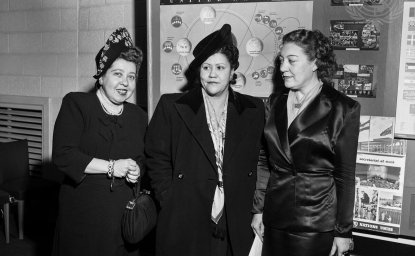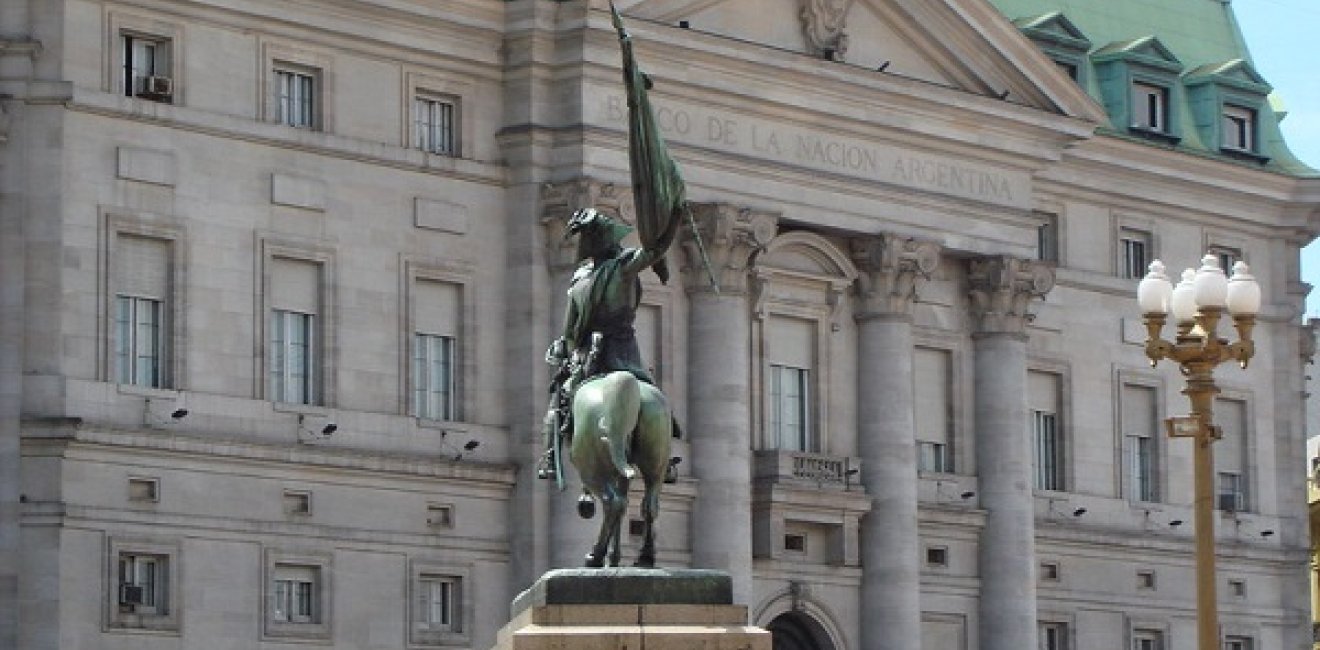
A blog of the Latin America Program
Once More unto the Breach, Wall Street Friends
By Nicolás Saldías
Argentina is on the precipice of its ninth default as it struggles to repay its crippling foreign debt, $281 billion in 2018. At the core of its solvency problem is Argentina’s inability to export enough goods and services to generate the dollars needed to repay its foreign currency debt. In 2018, the country’s debt service absorbed 45 percent of export income, compared to 32 percent for heavily indebted Brazil. This year alone, Argentina’s repayment burden is estimated at $64 billion, which would likely consume almost all of the country’s export earnings, squeezing imports for consumers and companies, unless the government manages to renegotiate its debt obligations.
President Alberto Fernández is attempting to restructure Argentina’s debt to preserve scarce foreign exchange and avoid default. But even he acknowledges that a meaningful economic rebound is only possible if Argentina rapidly expands exports. As he said during his inaugural address in December, “we must redevelop a productive economy that allows us to export and thus generate payment capacity.” So far, however, public policy in the young administration has focused on debt restructuring, with few signals about how it might stimulate exports.
To Forgive is Not to Forget
Fundamentally, Argentina’s debt crisis stems from chronic overspending, which necessitates distortionary high taxes, and often results in excessive borrowing and inflationary money printing.
For now, Mr. Fernández’s answer is increased export taxes on Argentina’s most competitive sector, agriculture. That will boost revenue in the short-run, but it will likely decrease investment over time, reducing exports and tax receipts. It will also have political consequences, adding to the historic mistrust between rural producers and Peronists. Already, farmers are protesting the new taxes, evoking memories of the 2008 agricultural conflict. Mr. Fernández’s tax policy has also raised concerns among investors in the oil and gas industry, who fear becoming a target as that sector expands. (To attract investment, the government has proposed to protect oil and gas firms from similar tax measures.)
In its own attempt to husband foreign exchange, President Mauricio Macri re-imposed capital controls to stop capital flight after the surprising August primary election results made it clear his pro-business government would not be reelected. The new government has made those restrictions even more draconian, limiting foreign exchange purchases to $200 a month, and imposing a 30 percent tax on purchases of goods and services from overseas. Those measures have allowed Argentina to collect enough dollars to continue servicing its debt.
But like farm export taxes, capital controls are counterproductive, as they discourage exports. Exporters not only face higher taxes, but they are forced to sell their dollar earnings at the official, overvalued exchange rate. In the past, farmers have reacted to similar policies by reducing planting and hoarding crops.
A successful debt restructuring would give the government breathing room, leading it to reverse its most distortionary policies. But even the most favorable debt resolution would not solve the country’s arguably biggest economic hurdle: its underperforming export sector.
Closed for Business
How did a country blessed with ample natural resources, an educated workforce and a history of export-led prosperity end up one of the most closed economies in the world?
In 1913, Argentina was one of the world’s fastest-growing economies, a global breadbasket that accounted for 2.5 percent of world trade. By 2018, its share of global trade had fallen to a paltry 0.3 percent.
Argentina’s century-long decline from among the world’s most open economies to one of its most autarkic stems from its response to the Great Depression and the collapse in global trade. Its answer was import substitution industrialization, which dominated trade policy from the 1930s to the 1990s.
Given its origins, protectionism is closely associated with Peronism, while the opposition is typically regarded as pro-trade. As a result, trade has remained a persistent dividing line in Argentine politics, though few other major political movements in the region still advocate such interventionist trade policy.
This polarization was evident in a recent Wilson Center-Poliarquía ArgentinaPulse survey that showed public opinion in Argentina divided neatly in thirds over whether globalization is positive, negative or has no impact. Slight majorities prefer opening the country to trade and see free trade agreements as an opportunity. But opinions on globalization, free trade and open markets map closely to party identity.
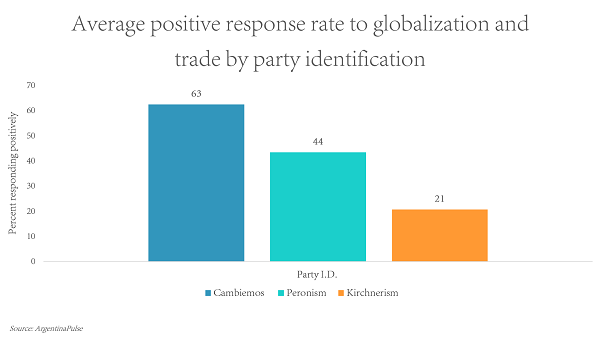
Timing is Everything
Peronist skepticism towards free trade was reinforced by Argentina’s export boom in the 2000s. In that era, Argentina saw exports expand rapidly without any structural reform or trade liberalization. Indeed, to great fanfare, President Néstor Kirchner helped scuttle the U.S.-led Free Trade Agreement of the Americas during the 2005 Summit of the Americas in the Argentine seaside city of Mar del Plata.
A rare combination of factors had created the impression Argentina could thrive without reform. Its mega-devaluation in 2002, which helped push more than half the population into poverty, made the country’s exports highly competitive. Around the same time, the U.S. invasion of Iraq, China’s rapid growth and Brazil’s economic recovery led to a sharp increase in commodity prices. That boom – and the savings from nonpayment of Argentina’s large foreign debt, and the imposition of export taxes – gave Argentina a historically large budget surplus. At the height of the boom, Argentina’s exports generated $98 billion in 2011.
Unsurprisingly, it did not last. In 2018, Argentina’s exports brought in only $74 billion.
Even during the boom, Argentina’s export performance was mediocre by regional standards, but high international prices masked that reality. Throughout that period, Argentina actually underperformed its neighbors and the world in the growth of export volumes, especially after 2011, when Cristina Fernández de Kirchner implemented her most interventionist policies.
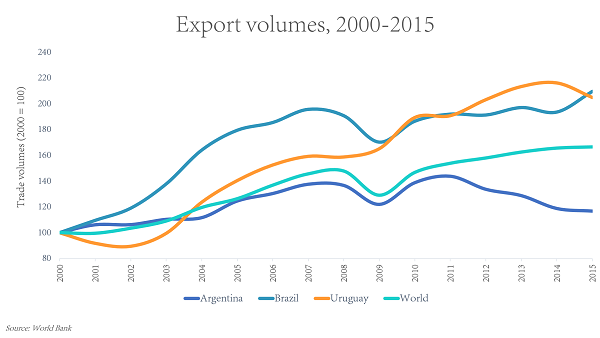
In fact, the economic mismanagement of Ms. Fernández de Kirchner’s administration led to a sharp decline in exports. Policies such as capital controls, trade restrictions and high taxes caused investment to plummet. From 2011 to 2015, 40 percent of Argentina’s small and medium-sized firms stopped exporting, and nearly 1,200 shut down entirely. In 2015, Argentina’s export volume was only 16 percent higher than in 2000, whereas both Brazil and Uruguay had doubled exports in the same period.
In the energy sector, Argentina’s anti-competitive policies, such as subsidizing prices, were particularly counterproductive. Under the three Kirchner administrations, consumers paid a mere 14 percent of the market price for energy, as the share of an average salary spent on energy fell from 4.5 percent in 2001 to 0.6 percent in 2015. As a result, production of oil and gas dropped sharply, even as consumption increased, and Argentina soon became a net energy importer. Though Ms. Fernández de Kirchner attempted to compensate by attracting investment to Vaca Muerta, one of the world’s largest deposits of unconventional oil and gas, Argentina grew even more dependent upon costly energy imports.
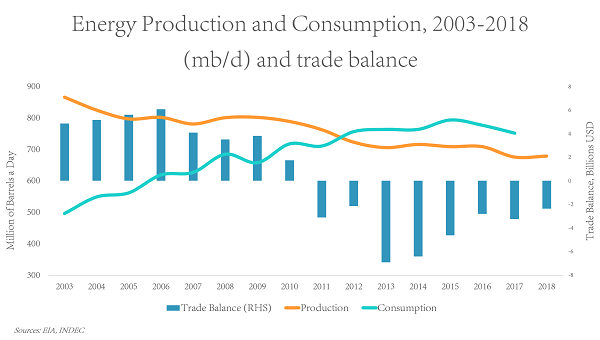
Macri’s Mixed Legacy
The election of the conservative Mauricio Macri in 2015 came as a surprise. Argentine voters were the first to deliver a defeat to a leftist government in Latin America since the “pink tide” dawned in the mid-2000s. Mr. Macri promised to reintegrate Argentina into the global economic order, and reduce the size of the state to make the economy more competitive. Unlike Mr. Menem, however, Mr. Macri was cautious in his approach to reform. Though he liberalized manufacturing inputs, for example, he moved slowly in “sensitive sectors in which many jobs – particularly in politically sensitive electoral districts – would be at stake,” according to a recent IDB report.
Nevertheless, Mr. Macri reversed the decline in export volumes, but it failed to translate to an economic windfall. That was in part due to the uncooperative global context, including a recession in Brazil, China’s slowdown and the U.S.-China trade war, which lowered commodity prices. Mr. Macri ended his term with a large trade surplus, but that was mostly thanks to the crushing recession that started in 2018. The devaluation of the peso and economic crisis produced a $16 billion surplus in 2019, but that was almost exclusively caused by a collapse in domestic demand that depressed imports.
Though Mr. Macri paid a political cost for the import compression, he bequeathed the current government better fiscal and balance of payments conditions than he received, even as he left Argentina heavily in debt and with higher poverty. Should prices for Argentina’s exports increase over the next four years, Argentina will be well positioned to harvest the windfall. The biggest challenge will be the government’s own policies.
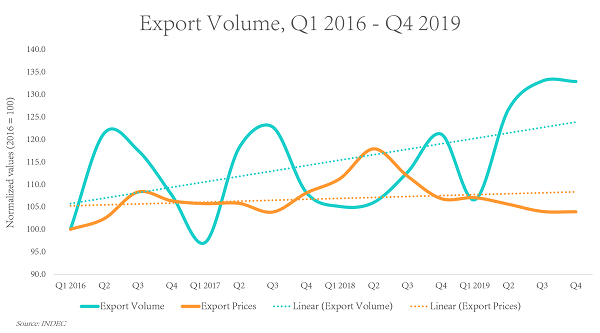
Hard Way Out
So far, Mr. Fernández’s approach is to replicate the cheap peso strategy of the Néstor Kirchner administration to incentivize exports and compress imports. The steep devaluations at the end of the Macri period boosted exports, but given high inflation in Argentina, these benefits will quickly fade. As production costs – such as wages – rise, exporters will see lower profits. This will be particularly true for producers who rely upon imported inputs and foreign loans, which are costlier after a devaluation. Meanwhile, the initial surge in exports from the devaluation again allowed firms to avoid costly investments to boost productivity.
Should Mr. Fernández negotiate an amicable debt restructuring, Argentina might get another chance to correct the mistakes of its past. As a Peronist, he has the political capital to persuade recalcitrant protectionists in his coalition to accept pro-trade reforms. He has already proposed a framework for negotiations between businesses, unions and the government – the Economic and Social Council – that could be used to advance structural reform.
The reform path would not promise immediate results, and the transition costs for important sectors of the economy would be politically costly. That said, it might be the only opportunity to begin to address Argentina’s underperforming export sector and chronic dollar shortage.
Author


Latin America Program
The Wilson Center’s prestigious Latin America Program provides non-partisan expertise to a broad community of decision makers in the United States and Latin America on critical policy issues facing the Hemisphere. The Program provides insightful and actionable research for policymakers, private sector leaders, journalists, and public intellectuals in the United States and Latin America. To bridge the gap between scholarship and policy action, it fosters new inquiry, sponsors high-level public and private meetings among multiple stakeholders, and explores policy options to improve outcomes for citizens throughout the Americas. Drawing on the Wilson Center’s strength as the nation’s key non-partisan policy forum, the Program serves as a trusted source of analysis and a vital point of contact between the worlds of scholarship and action. Read more


Argentina Project
The Argentina Project is the premier institution for policy-relevant research on politics and economics in Argentina. Read more

Explore More in Weekly Asado
Browse Weekly Asado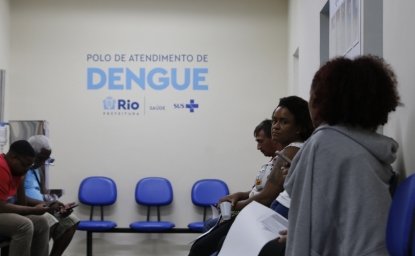
Dengue Haunts South America’s Summers

Lessons from Costa Rica’s Economic Transformation

Women and Latin America’s Digital Revolution
